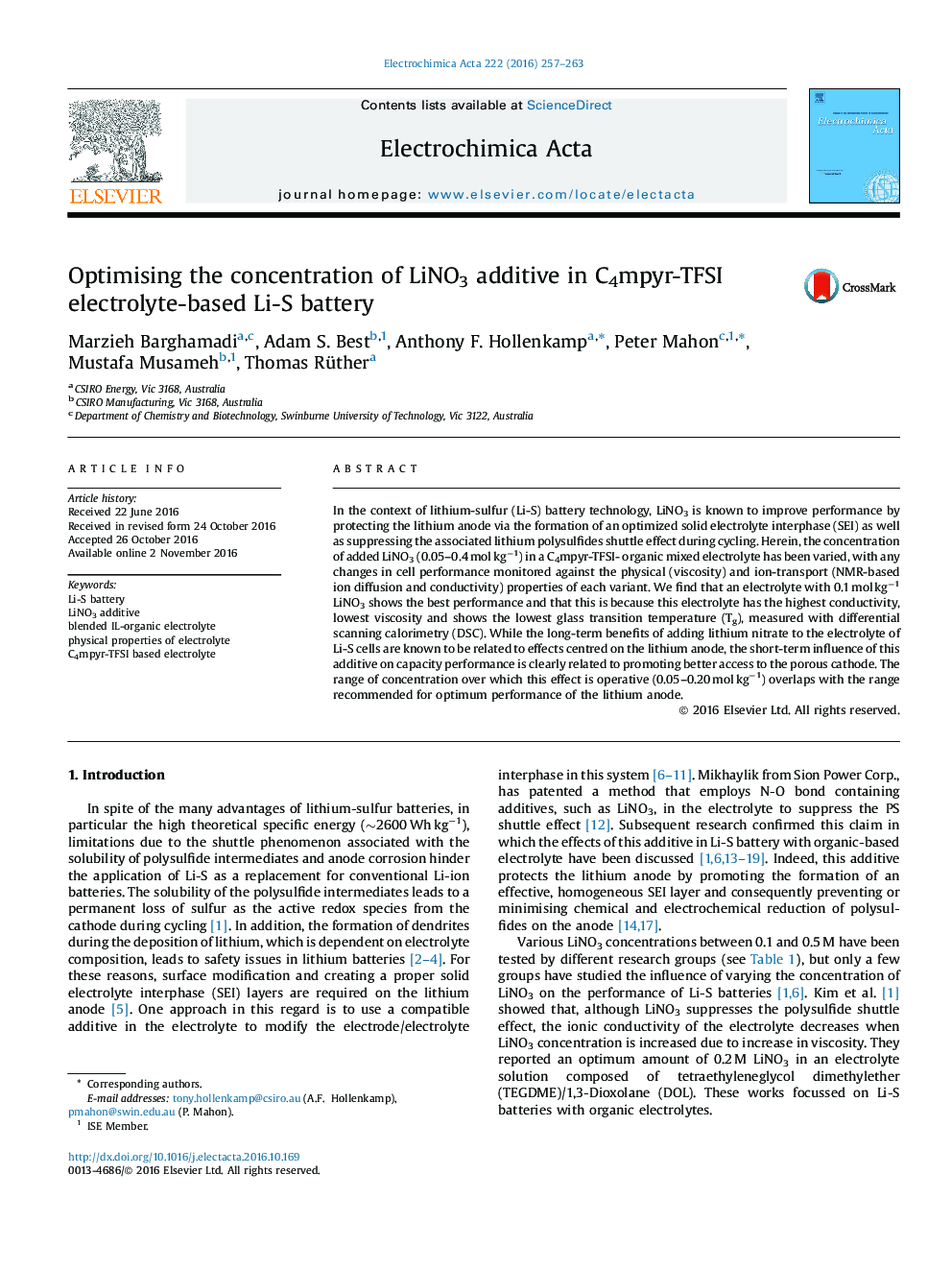| کد مقاله | کد نشریه | سال انتشار | مقاله انگلیسی | نسخه تمام متن |
|---|---|---|---|---|
| 6472542 | 1424135 | 2016 | 7 صفحه PDF | دانلود رایگان |

In the context of lithium-sulfur (Li-S) battery technology, LiNO3 is known to improve performance by protecting the lithium anode via the formation of an optimized solid electrolyte interphase (SEI) as well as suppressing the associated lithium polysulfides shuttle effect during cycling. Herein, the concentration of added LiNO3 (0.05-0.4 mol kgâ1) in a C4mpyr-TFSI- organic mixed electrolyte has been varied, with any changes in cell performance monitored against the physical (viscosity) and ion-transport (NMR-based ion diffusion and conductivity) properties of each variant. We find that an electrolyte with 0.1 mol kgâ1 LiNO3 shows the best performance and that this is because this electrolyte has the highest conductivity, lowest viscosity and shows the lowest glass transition temperature (Tg), measured with differential scanning calorimetry (DSC). While the long-term benefits of adding lithium nitrate to the electrolyte of Li-S cells are known to be related to effects centred on the lithium anode, the short-term influence of this additive on capacity performance is clearly related to promoting better access to the porous cathode. The range of concentration over which this effect is operative (0.05-0.20 mol kgâ1) overlaps with the range recommended for optimum performance of the lithium anode.
Journal: Electrochimica Acta - Volume 222, 20 December 2016, Pages 257-263